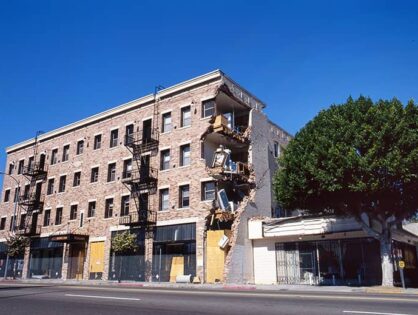What Services Are Offered?
Local Records Office in Indianapolis is a company that offers a comprehensive property profile report to help buyers, sellers, and real estate professionals understand the characteristics and value of a particular property. This report includes a variety of information and data, such as a plat map, student-to-teacher ratio, demographics, crime report, transaction history, and a copy of the deed.
Plat Map
A plat map is a type of map that shows the layout and division of a piece of land, usually for the purpose of selling or developing the land. Plat maps are typically created by surveyors and depict the location of property lines, roads, buildings, and other features on the land.
Plat maps are commonly used in real estate transactions to help buyers and sellers understand the layout and boundaries of a piece of property. They may also be used by local governments and planning agencies to regulate land use and development in a particular area.
Plat maps can be helpful for a variety of purposes, including determining the size and shape of a piece of property, identifying any easements or other legal restrictions on the property, and understanding the location of utilities and other infrastructure.
Plat maps are typically created using specialized surveying equipment and software and are often required by law to be filed with the local government or county registry. They may be available for viewing at the local county assessor’s office or online through the county’s website or other public records database.
Student-Faculty Ratio
The student-to-teacher ratio is a measure of the number of students in a class or school compared to the number of teachers. It is commonly used to evaluate the size of classes and the availability of individual attention for students.
The student-to-teacher ratio is typically calculated by dividing the total number of students in a school or class by the total number of teachers. For example, if a school has 500 students and 50 teachers, the student-to-teacher ratio would be 10:1.
A lower student-to-teacher ratio may be considered desirable because it can indicate that there are fewer students per teacher, which may allow for more individualized attention and support for students. However, it’s important to note that the student-to-teacher ratio is just one factor to consider when evaluating the quality of a school or class. Other factors, such as the qualifications and experience of the teachers, the availability of resources and support for students, and the overall learning environment, can also be important.
Demographics
Demographics in real estate refer to the statistical characteristics of a population, such as age, gender, income, education level, and occupation. These characteristics can be important for real estate professionals and investors because they can provide insight into the needs and preferences of potential buyers or renters in a particular area.
For example, if a real estate market has a high concentration of young families, this may suggest that there is a demand for properties with a certain number of bedrooms, a large yard, or easy access to schools and other family-friendly amenities. On the other hand, if a market has a high concentration of retirees, this may suggest that there is a demand for properties with features such as single-level living, low-maintenance landscaping, or access to medical facilities and other amenities that are of interest to seniors.
Demographic data can be collected and analyzed using various methods, including population censuses, surveys, and other sources of public and private data. Real estate professionals may use this data to help identify trends and patterns in the market and to make informed decisions about where to invest or develop properties.
Crime Report
A crime report is a document that provides information about a crime that has been committed. Crime reports are typically prepared by law enforcement agencies, such as the police, and may include details such as the date, time, and location of the crime; the type of crime that was committed; a description of any suspects or witnesses; and any other relevant information.
Crime reports may be used by law enforcement agencies to investigate and solve crimes, as well as to track and analyze crime trends and patterns in a particular area. They may also be used by courts and other legal authorities to prosecute criminal cases.
Crime reports may be made publicly available, either through the media or through public records requests. This can allow members of the community to stay informed about crime in their area and take steps to protect themselves and their property. However, it’s important to note that crime reports may contain sensitive or personal information, and it is generally not appropriate to share or distribute them without proper authorization.
Transaction History
Transaction history in real estate refers to a record of past sales or purchases of real estate properties in a particular area. A transaction history report can be useful for a variety of purposes, such as understanding the market value of a particular property, comparing the prices of similar properties in the area, or identifying trends and patterns in the real estate market.
Transaction histories may include information such as the date of the transaction, the location and type of the property, the sale price, and any other relevant details. They may be available through public records, such as county assessor’s offices or online databases, or through private sources, such as real estate brokers or agents.
Transaction histories can be useful for both buyers and sellers of real estate, as they can provide valuable insight into the market and help inform decisions about pricing and other aspects of the transaction. However, it’s important to note that transaction histories may not always be complete or accurate, and they should be used as one of many sources of information when evaluating the value of a property or making decisions about real estate.
Neighbors Information
A neighborhood information report in real estate is a document or report that provides detailed information about a particular neighborhood or area. These reports can be helpful for real estate professionals and buyers or renters who are considering purchasing or leasing property in a particular area.
Neighborhood information reports may include a variety of data and information, such as the location and size of the neighborhood, the types of homes and properties that are available, the cost of living in the area, the availability of schools, parks, and other amenities, and any other relevant information. They may also include data on local crime rates, the local economy and job market, and the demographics of the area.
Neighborhood information reports can be useful for helping buyers or renters understand the characteristics and potential risks or benefits of a particular neighborhood. They may be available from a variety of sources, such as local real estate agents, online real estate databases, or local government agencies. It’s important to note that neighborhood information reports may not always be complete or accurate, and they should be used as one of many sources of information when evaluating a neighborhood or area.
Sex Offenders Report
Registered sex offenders are required to update their information annually with local law enforcement, within five working days before or after their birthday. Some sex offenders must update their information more often: transients must update every 30 days and sexually violent predators must update every 90 days.
Copy of Deed
The deed is also known as a land contract or installment land contract. In a contract for deed, the seller, rather than a lending institution, finances the buyer’s purchase of the property.
A property deed is a written and signed legal instrument that is used to transfer ownership of the real property from the old owner (the grantor) to the new owner (the grantee).
Deeds can be classified in numerous ways. Broadly, deeds are classified as official or private. Official deeds are executed pursuant to court or legal proceedings. Most property transactions, however, involve individuals and business entities using private deeds.
Finally, the property profile report includes a copy of the deed, which is a legal document that specifies the ownership and rights associated with a particular piece of property. This can be helpful for understanding the legal status of the property and any restrictions or obligations associated with it.
Overall, the property profile report offered by the Local Records Office in Indianapolis is a valuable resource for anyone looking to buy, sell, or invest in real estate in the area. It provides a wealth of information and data that can help individuals make informed decisions about their property and the local real estate market.





